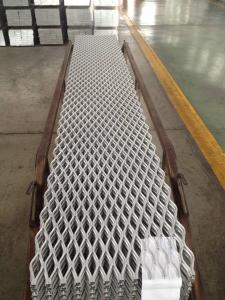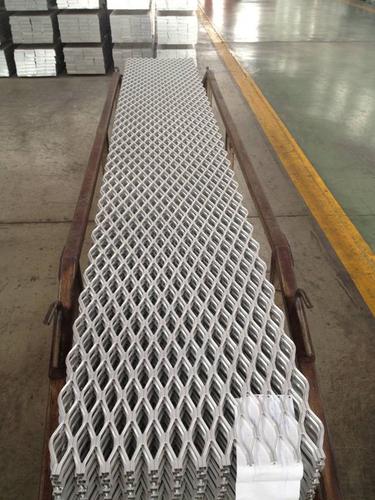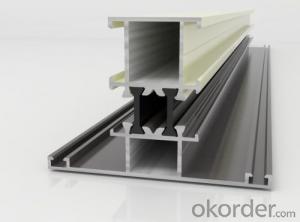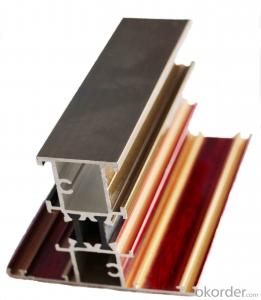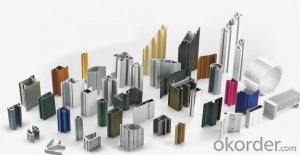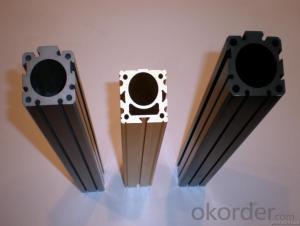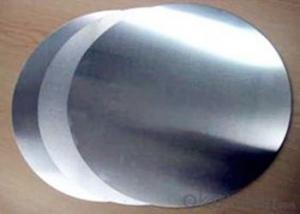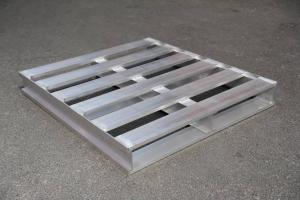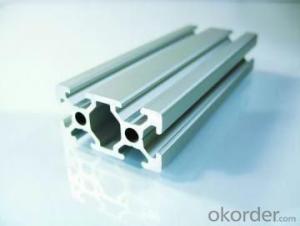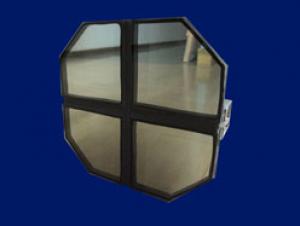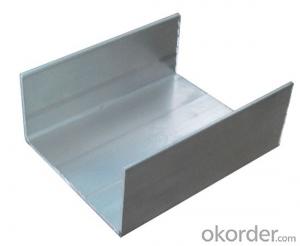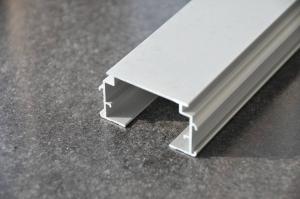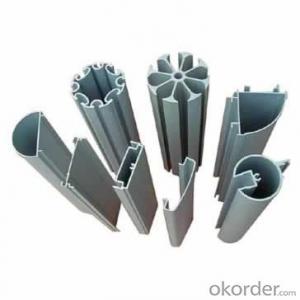Hot Sale Aluminum Walkway Extrusion Profiles C Channel
OKorder Service Pledge
OKorder Financial Service
You Might Also Like
Hot Sale Aluminium Walkway
Alloy: 6xxx
Applications: Safety grating, stair tread, walkway, cat-way, flooring
Standard package: suitable for long ocean transporting
OEM&ODM is welcome
Life Time:Last for life time
Diamond openings are complete with radiused corners at the saddle and side channel location
Specifications
1) Thickness:3.0mm
2) SWDxLWD:25x50mm
3) Competitive Price
Others:
Material: aluminum plate
Hole shape: diamond,hexagonal..
Pattern: Standard - raised surface aluminum expanded metal mesh, Flattended aluminum expanded metal mesh
Packing: moist-proof paper/pallet -wooden cases or wooden pallets or iron pallets
Surface treatment:powder coating,pvc coated, anodizing(oxidation)
Characteristic: The aluminum expanded metal mesh are made by the aluminum plate,widely used in the civil buildingand sound abatment material inthe hall,meeting rooms,walkway mesh.And the aluminum expanded metal meshs surface can be powder coating or PVC coated ,ex.:white,red, green etc.this is a good material for the decoration,it's very beautiful used for the housetop or walkway.
- Q: This question asks for an explanation of the various types of aluminum profiles that are specifically used in the construction or design of staircases.
- <p>Aluminum profiles for staircases are diverse and serve different functions. Common types include: 1. Handrail profiles, which provide support and safety. 2. Stringer profiles, forming the backbone of the staircase. 3. Tread profiles, which are the horizontal surfaces on which one steps. 4. Riser profiles, covering the vertical space between steps. 5. Baluster profiles, used as vertical supports between handrails and treads. 6. Connector profiles, for joining different parts of the staircase. Each type is designed to withstand specific loads and is chosen based on the staircase's design, weight capacity, and aesthetic requirements.</p>
- Q: This question asks if aluminum profiles can be utilized for constructing interior partitions or ceilings.
- <p>Yes, aluminum profiles are commonly used for interior partitions and ceilings due to their strength, durability, and lightweight properties. They offer design flexibility, are easy to install, and can be used in conjunction with various materials like glass or fabric. Additionally, aluminum profiles are resistant to corrosion and require minimal maintenance, making them a popular choice for both residential and commercial applications.</p>
- Q: This question asks for methods to ensure the reliable and durable installation of aluminum profiles.
- <p>To ensure the reliable and durable installation of aluminum profiles, follow these steps: Use high-quality aluminum materials that meet industry standards for strength and durability. Ensure proper alignment and level during installation to prevent warping or stress on the profiles. Use appropriate fasteners and adhesives recommended for aluminum to ensure a strong bond. Avoid over-tightening fasteners, which can cause deformation. Regularly inspect and maintain the profiles to check for signs of wear or damage, and address any issues promptly. This will help maintain the integrity and longevity of the aluminum profiles.</p>
- Q: What are the different tolerance levels for aluminum profiles?
- The tolerance levels for aluminum profiles can vary depending on the specific application and requirements. However, some common tolerance levels for aluminum profiles include dimensional tolerances, such as length, width, and thickness variations, as well as straightness, flatness, and surface finish tolerances. These tolerances ensure the desired precision and consistency in the manufacturing and assembly of aluminum profiles.
- Q: What are the major factors determining the quality of aluminum profiles?
- Material, section size, fit tolerance, surface treatment quality, etc.
- Q: Are aluminum profiles suitable for high-temperature environments?
- No, aluminum profiles are not generally suitable for high-temperature environments as they have a low melting point and can deform or lose their structural integrity at high temperatures.
- Q: What are aluminum profiles used for?
- Aluminum profiles have a wide range of applications in various industries. Construction and architecture are one of the primary uses of aluminum profiles. They are commonly employed in the framing of windows, doors, and curtain walls due to their lightweight yet durable characteristics. Modular structures like exhibition stands, trade show booths, and temporary shelters also utilize aluminum profiles in their construction. In the automotive industry, aluminum profiles play a crucial role in manufacturing components such as vehicle frames, roof rails, and trim parts. The lightweight properties of aluminum make it an excellent choice for enhancing fuel efficiency and reducing overall vehicle weight. Industrial machinery and equipment production also heavily relies on aluminum profiles. These profiles are used to construct machine frames, conveyor systems, and assembly lines. The versatility of aluminum profiles allows for easy customization and modification to meet specific industrial requirements. Furthermore, aluminum profiles find extensive use in furniture manufacturing and interior design. They are widely utilized in constructing shelving units, workstations, display cabinets, and partitions due to their aesthetic appeal, durability, and resistance to corrosion. The electrical and electronics industry also extensively utilizes aluminum profiles. They are employed in the manufacturing of heat sinks, enclosures, and mounting brackets. The excellent thermal conductivity of aluminum effectively dissipates heat, making it an ideal choice for electronic devices. In summary, the versatility, lightweight nature, corrosion resistance, and ease of customization make aluminum profiles highly sought after in numerous industries. They offer a wide range of applications in the construction, automotive, machinery, furniture, and electronics sectors.
- Q: What are the differences between standard and non - standard shapes?
- Hello, not within the scope of the national standard, so it is called non-standard,The standard piece is within the national standardThat's the difference,This GB standard can be found, are unified
- Q: This question asks for the method to determine the amount of aluminum required for a construction project.
- <p>To calculate the weight of aluminum profiles needed for a building project, follow these steps: 1. Determine the length and cross-sectional area of each aluminum profile required. 2. Use the aluminum density, which is approximately 2.7 grams per cubic centimeter (g/cm鲁). 3. Multiply the volume (length 脳 cross-sectional area) by the density to get the weight of each profile. 4. Sum the weights of all profiles to get the total weight needed. Ensure to account for any additional material for joints, connections, and potential waste. It's also advisable to consult with an engineer or use specialized software for precise calculations tailored to your project's specific requirements.</p>
- Q: Explain the positive environmental impacts of utilizing recycled aluminum in the construction industry.
- <p>Using recycled aluminum in construction offers significant environmental benefits. It conserves natural resources by reducing the need for mining new bauxite, the primary source of aluminum. This reduction in mining decreases habitat destruction, water pollution, and soil erosion. Additionally, recycling aluminum saves energy, as it requires only 5% of the energy needed to produce aluminum from raw materials. This energy conservation leads to lower greenhouse gas emissions and air pollution. Moreover, the use of recycled aluminum reduces landfill waste, as less material ends up in landfills. Overall, it promotes a more sustainable and eco-friendly construction process.</p>
Send your message to us
Hot Sale Aluminum Walkway Extrusion Profiles C Channel
OKorder Service Pledge
OKorder Financial Service
Similar products
Hot products
Hot Searches
Related keywords
